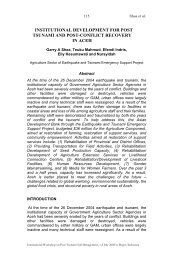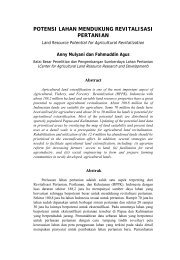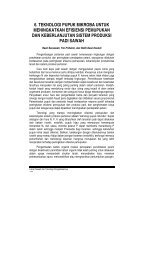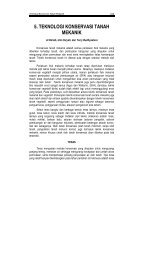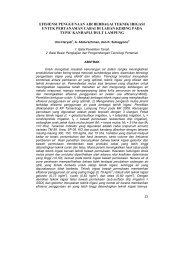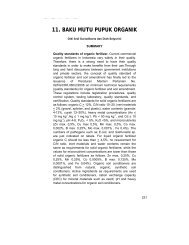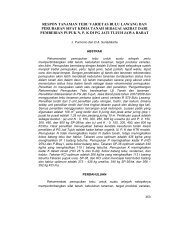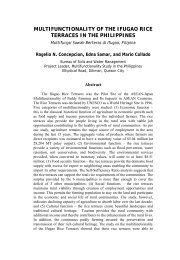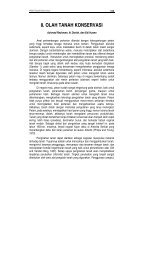booklet aceh barat.pdf - Balai Penelitian Tanah
booklet aceh barat.pdf - Balai Penelitian Tanah
booklet aceh barat.pdf - Balai Penelitian Tanah
You also want an ePaper? Increase the reach of your titles
YUMPU automatically turns print PDFs into web optimized ePapers that Google loves.
2.1. Climate<br />
II. LAND RESOURCES CONDITIONS<br />
Rainfall amount and distribution and mean annual temperature are the most<br />
important climatic elements determining land suitability for agricultural crops. Rainfall<br />
amount and distribution is related with water availability for evapo-transpiration of the<br />
crop. During vegetative growth water requirement is somewhat higher than that<br />
during the flowering and fruit maturing stages. For mango, for example, a few<br />
consecutive dry months (with rainfall of 9 wet months and no dry<br />
months) and B (7-9 wet months and less than two dry months) according to Oldeman<br />
et al. (1979) classification. Rainfall increases towards the western slopes of the Bukit<br />
Barisan, and is particularly heavy in the southern part of the district. In Meulaboh, all<br />
months receive over 200 mm with peaks in April and October. Zone B occupies<br />
between the very wet west coast and the inland plain and large areas on the upper<br />
slopes of the Bukit Barisan. Table 1 presents monthly rainfall and the number of rain<br />
days based on data from Cut Nyak Dien Airport of Nagan Raya.<br />
The annual fluctuation of monthly temperature is small. The difference<br />
between the warmest months (around May and November-December) and the<br />
coldest months (January and June) is less than 2 o C. The major variation in<br />
temperature is related to the elevation above sea level. Table 2 presents monthly<br />
maximum and minimum temperatures for Meulaboh and the vicinity areas.<br />
5



